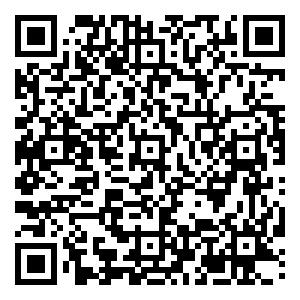ANALYSIS OF RECYCLING APPLICATION AND RISK CONTROL OF BOTTLE WASHING WASTEWATER IN CHINESE BAIJIU INDUSTRY
-
摘要: 为保障白酒包装洗瓶废水的安全高效再生利用,分析了废水水质特征,识别出不同再生利用途径的风险类型和主要风险因子,提出了管控措施建议。结果表明,洗瓶废水污染水平较低,污染物浓度略高于相应水质标准,悬浮物(SS)、有机物和微生物等是主要风险因子,其引发的再生利用主要风险包括食品安全危害、由微生物生长导致的健康风险危害、磨损、堵塞和损坏设备等方面。不同再生利用途径的保护对象不同、关注的特征污染物不同,是导致风险差异的主要原因。去除悬浮物是洗瓶废水再生利用风险管控必要措施,去除有机物和营养物质、控制细菌数是不同途径的风险管控要点。洗瓶废水宜用于农业利用,其次用于工业冷却、洗涤及生产、城市杂用、景观环境和洗瓶工艺。结合泸州案例提出了洗瓶废水再生利用策略和管控措施。未来应着眼于洗瓶废水再生利用风险全过程控制,拓宽废水再生利用途径,并将其融于城市水生态循环梯级利用模式中。研究的相关信息可为洗瓶废水的安全再生利用提供理论依据和技术参考。Abstract: To guarantee the safe and efficient recycling of bottle washing wastewater for the Chinese baijiu industry, wastewater characteristics were analyzed, the risk types and factors of different recycling pathways were identified, and then the control methods also were proposed.Resultsdemonstrated that bottle washing wastewater was with a low level of contamination, and the concentration of pollutants was slightly higher than the corresponding water quality standard. Suspended solids, organic matters, and bacteria were the main risk factors, which could trigger some risks for each recycling situation, such as food safety, health risks from microorganisms, nozzles clogging and damaging equipment, etc. The main reason for the differences in risk is that different recycling pathways have different protection targets and focus on different characteristic pollutants. Suspended solids removal was the necessary control measure for bottle washing wastewater recycling. Removal of organic matters and nutrients, and control of bacterial counts were the key control points for each situation respectively. Bottle washing wastewater should be reused for agriculture irrigation as a priority, followed by industrial cooling, washing and production, miscellaneous use in cities, environmental use in landscapes, and reuse in bottle washing processes. The strategies and measures for bottle washing wastewater reuse for Luzhou were proposed. In the future, we should focus on the full process control of the risk of recycling bottle washing wastewater, broaden the ways of wastewater recycling, and integrate it into the urban water ecological cycle cascade utilization. This paper can provide the theoretical basis and technical reference for the safe recycling of bottle washing wastewater.
-
Key words:
- bottle washing wastewater /
- recycling application /
- risk /
- control
-
[1] 中国酒业协会:2022年中国酒业经济运行报告[EB/OL].https://finance.sina.com.cn/tech/roll/2023-06-09/doc-imywrsqp2073324.shtml.2023-10-08. [2] 周菊容,陈涨,骆亚锋,等.浓香型白酒生产废水水质及其治理研究[J].酿酒科技,2023,344(2):75-81. [3] 蔡小波,黄孟阳,杨平,等.酿酒生产废水处理工艺及其资源化利用研究进展[J].酿酒.2022,49(1):22-28. [4] 2020年1—12月酿酒行业运行情况[EB/OL].https://www.miit.gov.cn/gxsj/tjfx/xfpgy/sp/art/2021.2023-10-08. [5] 祖军宁,粟一峰,王一旭,等.白酒工业废水治理技术研究进展[J].中国资源综合利用,2020,38(10):97-106. [6] 康家伟,霍崇,荆江莉,等.沉淀-UASB-SBR工艺处理某白酒厂生产废水[J].环境工程,2015,33(增刊1):6-8,24. [7] 卢皓,田金平,吕一铮,等.白酒酿造固体废弃物资源化利用新进展[J].环境工程,2022,40(11):231-236,250. [8] 王洋,黄奇云,谢杰,等.农村排水户酿酒废水收集、预处理和集中处理[J].中国给水排水,2022,38(22):123-129. [9] 黎崎均,苏建,张富勇,等.利用微藻处理酿酒废水及资源化的研究进展[J].工业水处理:2023,43(9):1-26. [10] 李忠新,张帆,李梦,等.一种洗瓶水过滤装置及洗瓶水回收系统:CN207591392U[P].2018-07-10. [11] 赵成涛.一种洗瓶水循环净化装置及循环净化方法:CN106430758A[P].2017-02-22. [12] 钱青青,钱平平,钱利平.一种包装洗瓶水循环再利用方法:CN105016542A[P].2015-11-04. [13] 刘莉,苏建,张富勇,等.膜技术处理酿酒废水及资源回收的研究进展[J].酿酒科技,2022(4):90-95,100. [14] 郝姝然,陈卓,徐傲,等.黄河流域主要城市再生水利用状况及潜力分析[J].环境工程,2022,40(10):1-8,79. [15] 崔琦,陈卓,李魁晓,等.再生水系统的可靠性:内涵及其保障措施[J].环境工程,2019,37(12):75-79,108. [16] 中华人民共和国市场监督管理局,中国国家标准化管理委员会.城市污水再生利用分类:GB/T 18919—2002[S].北京:中国标准出版社,2002. [17] 中华人民共和国市场监督管理局,中国国家标准化管理委员会.城市污水再生利用景观环境用水水质:GB/T 18921—2019[S].北京:中国标准出版社,2019. [18] 中华人民共和国市场监督管理局,中国国家标准化管理委员会.城市污水再生利用城市杂用水水质:GB/T 18920—2020[S].北京:中国标准出版社,2020. [19] 中华人民共和国国家质量监督检验检疫总局,中国国家标准化管理委员会.城市污水再生利用工业用水水质:GB/T 19923—2005[S].北京:中国标准出版社,2005. [20] 中华人民共和国国家质量监督检验检疫总局,中国国家标准化管理委员会.城市污水再生利用农田灌溉用水水质:GB/T 20922—2007[S].北京:中国标准出版社,2007. [21] 中华人民共和国市场监督管理局,中国国家标准化管理委员会.生活饮用水卫生标准:GB5749—2022[S].北京:中国标准出版社,2022. [22] 胡洪营.中国城镇污水处理与再生利用发展报告 (1978—2020)[M].北京:中国建筑工业出版社,2021. [23] 张馨怡,魏东斌,杜宇国.再生水水质稳定性评价指标与体系[J].环境科学,2022,43(2):586-596. [24] 胡洪营,孙迎雪,陈卓,等.城市水环境治理面临的课题与长效治理模式[J].环境工程,2019,37(10):6-15. [25] 高帅强,邵辉煌,柏春荫,等.再生水补给水体中丝状藻爆发成因分析:以华南某水体为例[J].环境工程,2021,39(4):7-12,91. [26] LUO L,WU Y,CHEN G,et al.Chlorine-resistant bacteria (CRB) in the reverse osmosis system for wastewater reclamation:isolation,identification and membrane fouling mechanisms[J].Water Research,2021,209(15):117966. [27] CAO K,CHEN Z,SUN Y,et al.Modeling and optimization of synergistic ozone-ultraviolet-chlorine process for reclaimed water disinfection:from laboratory tests to software simulation[J].Water Research,2023,243(16):120373. [28] 四川省环境保护厅,四川省质量技术监督局.四川省岷江、沱江流域水污染物排放标准:DB51/2311—2016[S].成都:四川省标准局,2016. [29] 王鹏.尾水发电在重庆市鸡冠石污水处理厂的应用[J].中国给水排水,2010,26(6):69-71,84. -

 点击查看大图
点击查看大图
计量
- 文章访问数: 315
- HTML全文浏览量: 74
- PDF下载量: 6
- 被引次数: 0

 登录
登录 注册
注册 E-alert
E-alert

 登录
登录 注册
注册 E-alert
E-alert

 下载:
下载:
